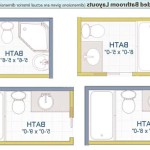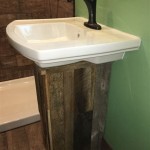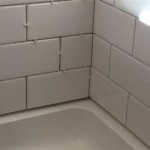How to Install Bathroom Plumbing in Basement
Installing bathroom plumbing in your basement is a challenging yet rewarding project that can add value and convenience to your home. With the right preparation and tools, you can complete this task and create a fully functional bathroom in your underground space.
Here's a comprehensive guide to help you install bathroom plumbing in your basement:
1. Planning and Preparation
Before starting, it's crucial to plan your bathroom layout and gather all necessary tools and materials. Consider the location of the toilet, sink, shower, and any other fixtures, ensuring they fit the available space and existing plumbing lines.
2. Drain Lines and Venting
The drain lines connect fixtures to the main sewer line, while venting allows gases to escape. Plan the routing of these lines, ensuring they have the correct slope and diameter for optimal drainage. Install vents to prevent sewer gases from backing up into your bathroom.
3. Water Supply Lines
Install water supply lines from the main water source to each bathroom fixture. Use PEX or copper pipes and fittings, and ensure the lines are properly sized for the fixtures they serve. Consider adding shut-off valves for easy maintenance.
4. Toilet Installation
Start with the toilet, measuring and marking the floor for the flange location. Secure the flange and wax ring, then position the toilet on top and tighten the bolts. Connect the water supply line and test for leaks.
5. Sink Installation
For the sink, install the drain and supply lines first. Position the sink on the vanity and secure it using the mounting brackets. Connect the drain and supply lines, then test for leaks.
6. Shower or Bathtub Installation
If installing a shower or bathtub, follow the manufacturer's instructions. Typically, you'll need to create a shower pan or base, install the drain, and connect the supply lines. Secure the shower or bathtub and make sure it's level.
7. Electrical Work
Hire a licensed electrician to handle the electrical work, including installing lighting, switches, and GFCI outlets. Ensure all electrical components are grounded and meet safety standards.
8. Wall Finishes and Fixtures
Once the plumbing and electrical work is complete, you can install wall finishes and fixtures. This includes drywall, paint, tile, and mirrors. Ensure the walls are moisture-resistant and sealed around any openings.
9. Final Touches
Add finishing touches to your bathroom, such as towel racks, toilet paper holders, and shower curtains. Inspect the plumbing fixtures for leaks, and ensure everything is functioning properly.
Installing bathroom plumbing in your basement requires careful planning, proper materials, and attention to detail. By following these steps, you can create a functional and stylish bathroom that will enhance your home's value and enjoyment.
How To Plumb A Basement Bathroom Diy Family Handyman

Basement Bathroom Plumbing Planning For A Below Grade Lavatory

How To Diy Bathroom In Basement Without Breaking Concrete

How To Finish A Basement Bathroom Pex Plumbing

Basement Bathroom Plumbing Planning For A Below Grade Lavatory

Adding A Shower To Basement Bathroom Doityourself Com Community Forums

Should You Install A Bathroom In Your Finished Basement 2024 Design Plumbing

How To Finish A Basement Bathroom Pex Plumbing

Basement Bathroom Rough In Plumbing Tour

How To Diy Bathroom In Basement Without Breaking Concrete







